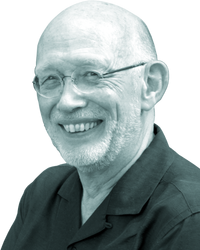
Over het archief
In 2012 verloren we Jean Jacques Peters, voormalig ingenieur van het Waterbouwkundig Laboratorium (1964 tot 1979) en internationaal expert in sedimenttransport, rivierhydraulica en -morfologie. Als eerbetoon aan hem hebben we potamology (http://www.potamology.com/) gecreëerd, een virtueel gedenkarchief dat als doel heeft om zijn manier van denken en morfologische aanpak van rivierproblemen in de wereld in stand te houden en te verspreiden.
Het merendeel van z’n werk hebben we toegankelijk gemaakt via onderstaande zoekinterface.
| [ meld een fout in dit record ] | mandje (1): toevoegen | toon |
 |
| one publication added to basket [239694] | |
| A new disposal strategy in the Westerschelde, conciliating port accessibility and nature Plancke, Y.; Beirinckx, K.; Liek, G.-J.; Vos, G.; Schrijver, M. (2014). A new disposal strategy in the Westerschelde, conciliating port accessibility and nature, in: 33rd PIANC World Congress - Navigating the new millenium, San Francisco, June 1 to 5, 2014: papers. pp. [1-13]
In: (2014). 33rd PIANC World Congress - Navigating the new millenium, San Francisco, June 1 to 5, 2014: papers. PIANC: [s.l.].
|
| Beschikbaar in | Auteurs |
| |
| Documenttype: Congresbijdrage | |
| Trefwoorden |
Anchorages > Harbours Disposal Nature Strategies ANE, Nederland, Westerschelde [Marine Regions] |
| Auteurs | Top | |
|
|
| Abstract |
In 2010, the navigation channel in the Schelde estuary was enlarged, allowing vessels with a draft up to 131 dm to reach the Antwerp port area independent of the tide. In total 7,7 Mm3 (in the Westerschelde) and another 7 Mm3 (in the Zeeschelde) of capital dredging was necessary. During the following years another 11,8 Mm3 respectively 4 Mm3 of maintenance dredging must take place every year to maintain the optimised port accessibility. In the Westerschelde, the sandy sediments had to be relocated within the estuary, without jeopardising the multiple channel system. Therefore the former strategy of disposing sediment in secondary channels was no longer seen as a sustainable strategy, and a new strategy was proposed by a group of experts appointed by the Antwerp port authority: the dredged material could be relocated near sandbars, to create new ecological valuable areas. This new strategy was first investigated by Flanders Hydraulics Research, combining several research tools, and performing 2 in situ disposal tests near the Plaat van Walsoorden. After a positive evaluation of the tests, the strategy was further developed, and 4 locations were chosen to apply the strategy to. The main idea of the strategy is using dredged sediments to create morphological structures that influence the flow patterns, creating low dynamic areas, which are suited for ecological purposes ("working FOR nature"). Since the 4 locations each have specific characteristics, site-specific relocation strategies were developed, taking into account local flow and sediment characteristics. For 2 locations at the tip of a sandbar (Hooge Platen West and Plaat van Walsoorden) a "megadune" has been realised, creating a shadow zone behind the megadune. For the other 2 locations (Hooge Platen North and Rug van Baarland) located along a sandbar, a "sandspit" has been realised, aiming at guiding the flow away from the sandbar. To evaluate the success of this new disposal strategy, an extensive monitoring program was set up and several criteria were defined. Frequent (2-weekly, monthly) topo-bathymetric surveys using multibeam echo sounding are performed in combination with seasonal sedimentationerosion measurements using both RTK (intertidal) and singlebeam (subtidal). Also flow velocities on 10 transects, each consisting of 4 measuring points, in the shallow subtidal (1) and the intertidal zone (3) near the disposal locations are monitored using AD(C)P’s. All devices look upward: the ADCP (Teledyne RDI) in the subtidal is placed on a frame, while the AquaDopp’s (Nortek) on the intertidal zone were dug in the sandbar. Before the start of the deepening the reference situation was monitored for all parameters mentioned above. Since the start of the works, new measuring campaigns at all locations have been executed to evaluate the effect of the disposal activities. Preliminary results (2013) show different effects near different sandbars, ranging from almost no effect to a significant reduction or increment of current velocities. Parallel with the monitoring, a validated 2D-numerical hydrodynamic model was used to evaluate the effects of the disposal of sediments. Every three months, a simulation is performed using the most recent topo-bathymetry. This allows an extra evaluation of the changes in flow velocities and flow patterns near the disposal areas. During the following years this monitoring will continue, allowing the evaluation of the new disposal strategy on the longer term. |
| Top | Auteurs |

